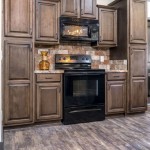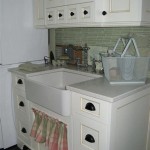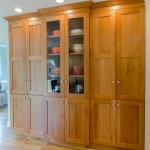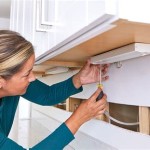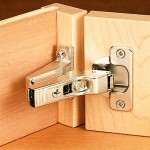How To Replace Kitchen Sink and Cabinets Together: A Comprehensive Guide
Undertaking a kitchen renovation that involves replacing both the sink and cabinets simultaneously represents a significant project, but one that can dramatically transform the functionality and aesthetics of the space. This comprehensive guide details the process, providing the necessary information to ensure a successful installation, whether performed independently or managed with the assistance of professional contractors.
Careful planning and preparation are paramount. This includes meticulously measuring the existing space, selecting the appropriate replacement cabinets and sink, gathering the necessary tools and materials, and understanding the underlying plumbing and electrical systems. Deviation from this principle can lead to complications, added expenses, and delays.
I. Planning and Preparation: Laying the Groundwork for Success
The initial stage focuses on thorough planning. Start by accurately measuring the dimensions of the existing cabinets and sink area. This includes the width, height, and depth of the cabinets, as well as the placement of plumbing lines and electrical outlets. Documenting these measurements is crucial for selecting replacement components that will fit seamlessly into the intended space.
Cabinet selection is a critical decision. Consider the desired style, material, and functionality. Stock cabinets offer a cost-effective solution and are readily available. Semi-custom cabinets provide more options for customization, while custom cabinets allow for complete design flexibility but at a higher expense. Evaluate the pros and cons of each option based on budget and design preferences.
Sink selection should complement the cabinets and cater to practical needs. Options include undermount, drop-in, and farmhouse sinks, each with distinct aesthetic and functional characteristics. Consider the sink material, such as stainless steel, cast iron, or composite, based on durability, maintenance requirements, and desired aesthetic.
Before proceeding, it is essential to create a detailed budget that encompasses all anticipated expenses, including the cost of cabinets, sink, plumbing fittings, tools, and potential labor costs if professional assistance is required. Allocate a contingency fund for unexpected expenses or complications that may arise during the project.
Compile a list of all required tools and materials, including power drills, screwdrivers, wrenches, levels, measuring tapes, safety glasses, work gloves, and any specialized tools recommended by the cabinet and sink manufacturers. Ensure that all necessary plumbing supplies are on hand, such as shut-off valves, supply lines, and drain fittings.
Finally, it is crucial to obtain all necessary permits from the local building department before commencing any work. Permit requirements vary depending on the location and the scope of the project. Failure to obtain the required permits can result in fines and delays.
II. Demolition and Removal: Safely Disconnecting and Removing Existing Components
The demolition phase involves carefully removing the existing cabinets and sink. Before starting, turn off the water supply to the sink at the shut-off valves located under the sink. If shut-off valves are absent or malfunctioning, turn off the main water supply to the house.
Disconnect the drain lines from the sink. Place a bucket underneath the drain to catch any residual water. Use a wrench to loosen the connections and carefully remove the drain pipes. Inspect the drain lines for any signs of corrosion or damage and replace them if necessary.
Disconnect the water supply lines from the faucet. Use a wrench to loosen the connections and carefully remove the supply lines. Again, inspect the lines for any signs of wear and tear and replace them if needed. Consider replacing the shut-off valves if they are old or corroded.
Remove the faucet from the sink. Depending on the faucet model, this may involve loosening screws or nuts located underneath the sink. Carefully pull the faucet out of the sink and set it aside.
With the plumbing disconnected, proceed to remove the existing cabinets. Start by emptying the cabinets completely. Then, use a drill or screwdriver to remove the screws that secure the cabinets to the wall. Work carefully to avoid damaging the surrounding drywall or flooring.
Once the cabinets are detached from the wall, carefully lift them out of place. If the cabinets are heavy or bulky, enlist the help of another person to avoid injury. Dispose of the old cabinets and sink properly, following local regulations for waste disposal.
After removing the cabinets, inspect the exposed wall and floor for any damage, such as mold, rot, or water damage. Address any issues before proceeding with the installation of the new cabinets and sink.
III. Installation: Assembling and Securing the New Components
The installation process begins with the new cabinets. Refer to the manufacturer's instructions for specific assembly and installation guidelines. Assemble the cabinets according to the provided instructions, ensuring that all screws and hardware are properly tightened.
Locate the wall studs using a stud finder. Mark the location of the studs on the wall, as these will be used to secure the cabinets. Use a level to ensure that the cabinets are installed plumb and level. Shim the cabinets as needed to achieve a level surface.
Secure the cabinets to the wall studs using screws. Use screws that are long enough to penetrate the studs securely. Check the level again after securing each cabinet to ensure that the installation remains plumb and level.
Once the cabinets are installed, proceed with the sink installation. If installing an undermount sink, attach the sink to the countertop before installing the countertop on the cabinets. Follow the manufacturer's instructions for attaching the sink to the countertop.
If installing a drop-in sink, place the sink into the cutout in the countertop. Secure the sink using the provided clips or mounting hardware. Ensure that the sink is properly sealed to the countertop to prevent water leaks.
Connect the water supply lines to the faucet. Use new supply lines to ensure a reliable connection. Tighten the connections securely, but avoid over-tightening, which can damage the fittings.
Connect the drain lines to the sink drain. Use new drain pipes to ensure a proper seal. Tighten the connections securely, but avoid over-tightening.
Turn on the water supply and check for leaks. Inspect all connections carefully for any signs of leaks. Tighten any connections that are leaking until the leaks stop.
Apply caulk around the sink where it meets the countertop to create a watertight seal. Smooth the caulk with a wet finger to create a clean, professional finish.
IV. Finishing Touches: Completing the Project
After the cabinets and sink are installed and the plumbing connections are secure, focus on the finishing touches. Install any required hardware, such as cabinet pulls and knobs.
Inspect the installation carefully for any imperfections. Touch up any paint or stain as needed to conceal any scratches or blemishes.
Clean the area thoroughly to remove any debris or dust. Dispose of all packaging materials properly.
Test the sink and faucet to ensure that they are functioning properly. Check the water pressure and drainage. Make any necessary adjustments to ensure optimal performance.
This process of replacing kitchen sink and cabinets requires careful attention and dedication. By following these steps, the project can achieve its intended goals. If any doubts arise, seeking assistance from the experts is advisable.
How To Replace A Kitchen Sink Base Cabinet Vevano

Diy Friday 6 How To Remove A Kitchen Sink Unit With Completely Redundant Supplementary Bonding
How To Replace A Kitchen Sink Base Cabinet Vevano

How To Upgrade Your Kitchen Sink At Home With Ashley

Installing An Farmhouse Sink In Existing Cabinet

How To Avoid Mistakes When Changing An Apron Front Kitchen Sink Quick Tip Tuesday

How Can I Replace A Kichen Island Sink Base Cabinet Hometalk

Replace Cabinet Floor Under Sink Diy

Replace Kitchen Countertop And Topmount Sink With Undermount Abdullah Yahya
Removing Center Stile From Under The Sink Lumberjocks Woodworking Forum
Related Posts



